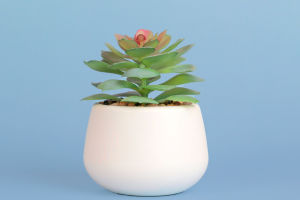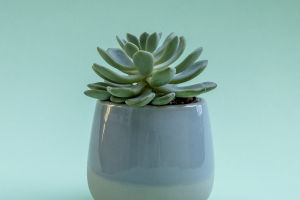Peperomia caperata, or ripple peperomia, is a compact, low-maintenance houseplant known for its heart-shaped, textured leaves.
Its resilience and attractive foliage make it a favorite among indoor gardeners.
Here's a guide to the essential planting techniques and care tips to ensure a healthy and thriving Peperomia caperata.
1. Choosing the Right Soil
Peperomia caperata requires a well-draining soil mix that holds some moisture but isn't too dense. A blend of equal parts peat moss, perlite, and orchid bark works well. Peat retains moisture, perlite improves drainage, and orchid bark keeps the soil airy. Avoid heavy soils, which can lead to root rot due to poor drainage.
2. Selecting Suitable Pots
Pots with drainage holes are essential to prevent excess water buildup. Terracotta pots are ideal, as they help excess moisture evaporate, keeping the soil from becoming too wet.
Since Peperomia caperata has a compact root system, shallow, medium-sized pots are usually sufficient. Repotting is only necessary if the plant outgrows its container.
3. Light Requirements
Peperomia caperata prefers bright, indirect light. Direct sunlight can damage its delicate leaves, so place it near a north- or east-facing window where it can receive filtered light.
If natural light is limited, Peperomia caperata also adapts well to artificial light. Use fluorescent or LED grow lights, keeping the plant 12-18 inches away for optimal growth.
4. Watering Practices
Proper watering is crucial for Peperomia caperata. This semi-succulent plant stores some moisture in its leaves, making it tolerant of brief dry spells. Water when the top inch of soil is dry, typically once a week in summer and every 10-14 days in winter.
5. Temperature and Humidity
Peperomia caperata thrives in moderate indoor temperatures between 65°F and 75°F (18°C and 24°C). It is sensitive to cold, so avoid placing it near drafts or air-conditioning vents.
This plant does well in typical household humidity but appreciates a slightly humid environment. During dry seasons, occasional misting or placing it near a humidifier can help maintain its health.
6. Fertilization
Peperomia caperata is a light feeder. Use a balanced, water-soluble fertilizer at half-strength once a month during the growing season (spring and summer). Avoid fertilizing in fall and winter when the plant's growth slows. Over-fertilizing can lead to nutrient buildup and root damage.
7. Pruning and Propagation
Peperomia caperata requires minimal pruning; just remove yellow or dead leaves to encourage healthy growth.
Take a healthy leaf with a short stem, dip it in the rooting hormone (optional), and place it in moist soil. Cover with a plastic bag to maintain humidity until new growth appears.
8. Pest and Disease Prevention
While Peperomia caperata is generally pest-resistant, it can occasionally attract spider mites, mealybugs, or aphids. Regularly inspect the leaves for pests and wipe them down with a damp cloth or treat them with insecticidal soap if needed.
Peperomia caperata is a hardy, attractive houseplant that adds elegance to any indoor space.
With the right soil, light, and watering techniques, it's easy to cultivate a thriving Peperomia caperata with minimal effort. Perfect for both beginners and experienced plant lovers, this resilient plant brings beauty and life to any home or office.


